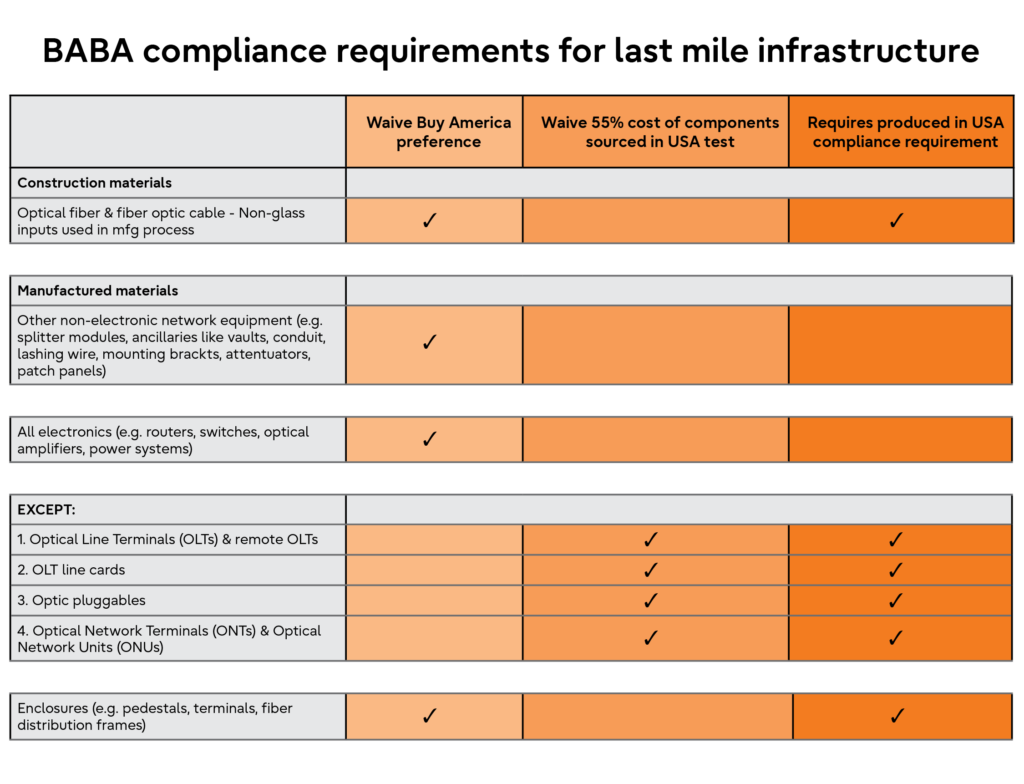
Since the National Telecommunications and Information Administration (NTIA) first announced the Broadband Equity, Access, and Deployment (BEAD) program, there has been considerable discussion about the opportunity it presents to close the digital divide across America. With more than $40 billion in funding to support planning, mapping and deployment of broadband networks, the outlook appears bright. Now that the funding allocations have been announced, it’s time to move from conversations to action. Are you ready for the next phase in getting funds from the BEAD program?
State of the state allocations
In June of this year, the NTIA allocated a total of $42.5 billion in funding to all 50 states, plus the District of Columbia and five territories, to enable deployment of affordable high-speed broadband as an integral part of the Internet for All initiative. The largest allocation was awarded to Texas, followed by California and Missouri, with nineteen states each receiving more than $1 billion. In addition to the planning, mapping, and deployment of broadband networks, the BEAD program will also support projects designed to ensure equal opportunities for internet access.

Data source: Internet for All
At this point, each state or territory has 180 days to submit a draft proposal that outlines how the grant money will be applied toward closing the broadband gap. States will be able to request access to at least 20% of their allocated funds once their plans are approved by the NTIA.
Before that happens, states have the opportunity to conduct their own review of unserved or underserved locations identified on the Federal Communications Commission (FCC) national broadband coverage map and submit suggested changes to the NTIA. This action involves a challenge process that allows local governments, nonprofit organizations, and broadband service providers to challenge a determination made by the state regarding whether a particular location or community is eligible for grant funds. Any successful challenges must be submitted to the NTIA for review and approval.
Covering broadband coverage costs
Once the draft proposals are approved, any broadband service provider, utility, or other organization identified to receive deployment funds will be required to provide matching funds of at least 25% of the total project costs and a letter of credit. This matching contribution may be provided by the broadband provider alone or in partnership with a government entity, nonprofit organization, regional commission, or other interested parties. Moreover, the 25% matching funds do not necessarily have to be in cash; they can be made up of in-kind contributions, such as access to rights of way, conduits, utility poles, or similar infrastructure for broadband delivery.
Of course, not all broadband deployments are created equal, with some locations being much more difficult and costly to cover. To bridge the divide in hard-to-reach areas, 10% of the BEAD program budget is being allocated based on the relative number of unserved locations in high-cost areas. The NTIA defines high cost using a model that considers an area’s remoteness, population density, topography, and poverty levels, measuring costs over the network lifetime.
To help ensure coverage in even the hardest to reach geographies, broadband providers are exempt from the minimum 25% matching funds requirement in these high-cost areas. Furthermore, the Bipartisan Infrastructure Law outlines a separate benefit of $75 per month to cover broadband costs for households in high-cost areas that demonstrate economic hardship.
BEAD broadband barriers
It’s important to note that each state or territory approaches delivery of broadband services in their own way. Some states have existing laws that impose specific requirements or limitations on public sector broadband providers, potentially excluding them from participating in this grant program. Because this might limit success of the program, the NTIA is advocating that these laws are waived for purposes of the BEAD broadband program.
The program also states that if a state or territory fails to waive these laws, they are required to identify all such laws in their initial proposal and describe how the laws will be applied in connection with competition for deployment grants. In addition, the final grant allocation proposal must disclose each unsuccessful application affected by such laws and describe how those laws impacted the state’s decision to deny the application.
Build and buy American
Another requirement for the BEAD program is the Build America, Buy America Act (BABA), which established a domestic content procurement preference in all Federal financial grants for infrastructure projects. To ensure that BEAD program grant recipients will have access to the products necessary to fulfill their obligations under the program, the Department of Commerce (DOC) recently proposed a limited and targeted waiver. The DOC stated, “The proposed waiver will, if granted, be effective for BEAD Program awards obligated after the effective date of the final waiver for a period of five years.” The opportunity for the public to comment on the proposed waiver ended September 21, 2023. We expect to hear from the DOC in the coming months if the waiver was modified so sub-grantees can plan for their fiber network buildouts. The agency will continue to assess on an annual basis whether the waiver fulfills its mission and goals and is consistent with other legal authorities per Executive Order 14005.

Notably, the BABA waiver related to BEAD program funding is distinct from the specifications of NTIA’s Enabling Middle Mile Broadband Infrastructure Program. The Middle Mile Grant (MMG) Program waived the ‘Buy American’ requirement for all broadband optical fiber transport equipment. The specific products covered by the waiver include broadband routing equipment, broadband access switching equipment, broadband aggregation switching equipment, microwave backhaul equipment, broadband optical fiber transport equipment, undersea cable equipment, fixed test equipment, telemetry router, telemetry switch, and combined broadband routing equipment.
The waiver will be effective for all MMGs awarded from March 1, 2023, until March 1, 2024, on the date of issuance of each award. NTIA will review this waiver within six months of the date it was issued to assess if it is still necessary.
Bridge the broadband gap
Approximately 24 million Americans currently lack high-speed internet due to a lack of access or inability to afford service. The BEAD program provides the resources needed to bring affordable, reliable broadband connectivity to enable equal access to healthcare, jobs, and educational opportunities for a more prosperous community.
At Fujitsu, we are applying our broadband expertise, proven technologies, best practices, and decades of telecom experience to help utilities, municipalities, tribal communities, and broadband service providers plan, deploy, and deliver reliable broadband access. Our experts in engineering design, supply chain logistics, project management, and network integration can help you tackle even the toughest challenges and roadblocks.
With the right guidance and support, you can plan and implement a broadband deployment project with greater reliability and less risk to help your community grow and prosper, now and in the future. Learn how Fujitsu’s customizable solutions can meet your community broadband needs.